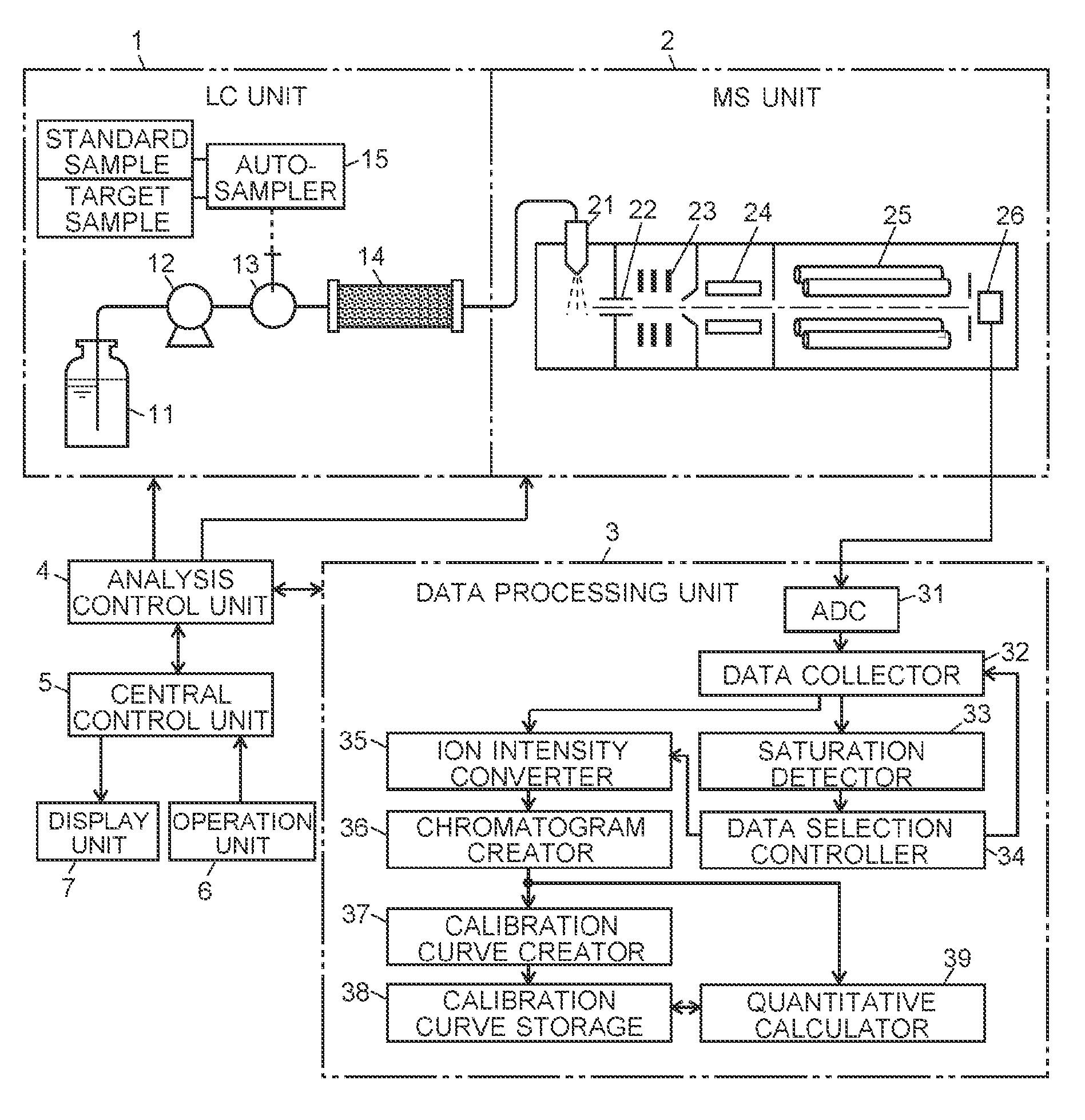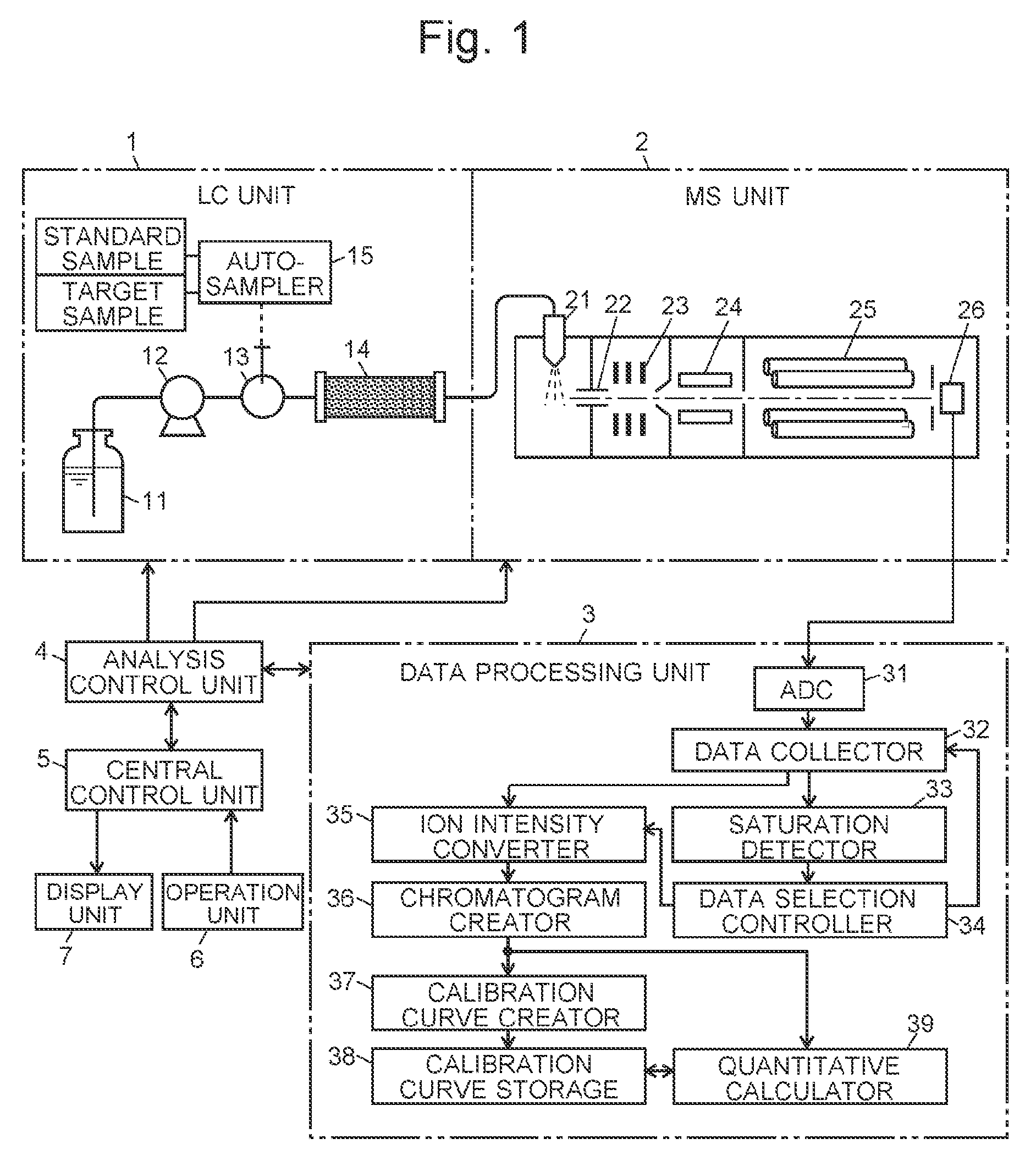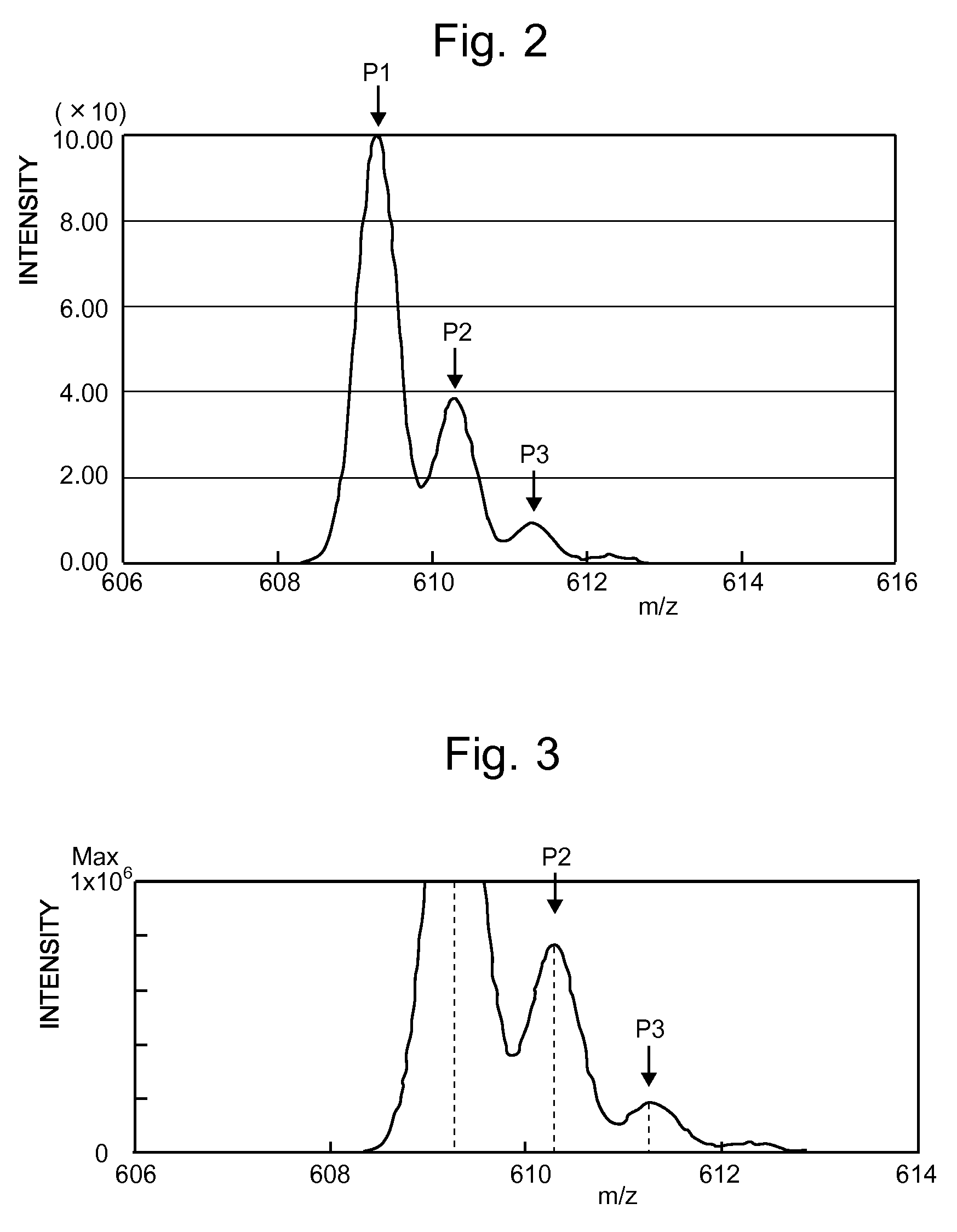Quantitative analysis method using mass spectrometer
a mass spectrometer and quantitative analysis technology, applied in the direction of calibration apparatus, instruments, separation processes, etc., can solve the problems of inaccurate data, inability to accurately obtain quantitative values (concentration) in mass spectrometry, and inability to measure concentration at high concentration levels
- Summary
- Abstract
- Description
- Claims
- Application Information
AI Technical Summary
Benefits of technology
Problems solved by technology
Method used
Image
Examples
Embodiment Construction
[0033]The principle of the quantitative analysis method according to the present invention is initially described with reference to FIGS. 2 and 3.
[0034]FIG. 2 shows one example of the mass spectrum (profile data) obtained by a mass spectrometry of reserpine (C33H40N2O9) in the positive ionization mode. As shown, a principal peak P1 having the highest ion intensity occurs at m / z 609.3. This principal peak P1 corresponds to the peak of the molecular ion ([M+H]+) of the reserpine composed of only the principal isotopes. Additionally, two subsidiary peaks P2 and P3, which are isotopic peaks of reserpine containing an isotope other than the principal isotopes, are present at m / z 610.3 and m / z 611.3 displaced from the principle peak P1 by 1 Da and 2 Da, respectively.
[0035]The natural isotopic abundance ratios of the constituent elements of reserpine, i.e. carbon (C), hydrogen (H), nitrogen (N) and oxygen (O), are generally known. For example, carbon has two isotopes, 12C and 13C, whose ma...
PUM
| Property | Measurement | Unit |
|---|---|---|
| mass spectrometer | aaaaa | aaaaa |
| mass-to-charge ratio | aaaaa | aaaaa |
| mass-to-charge ratios | aaaaa | aaaaa |
Abstract
Description
Claims
Application Information
 Login to View More
Login to View More - R&D
- Intellectual Property
- Life Sciences
- Materials
- Tech Scout
- Unparalleled Data Quality
- Higher Quality Content
- 60% Fewer Hallucinations
Browse by: Latest US Patents, China's latest patents, Technical Efficacy Thesaurus, Application Domain, Technology Topic, Popular Technical Reports.
© 2025 PatSnap. All rights reserved.Legal|Privacy policy|Modern Slavery Act Transparency Statement|Sitemap|About US| Contact US: help@patsnap.com



